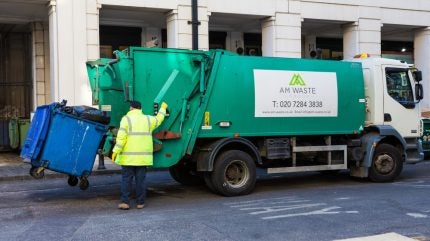
Residual waste in England increased to 28.6 million tonnes in 2021, up from 27.9 million tonnes the previous year, according to newly released figures from the Department for Environment, Food & Rural Affairs (Defra).
The data excludes major mineral and municipal residual waste, providing a focused insight into commercial, industrial, and other non-municipal sources.

Discover B2B Marketing That Performs
Combine business intelligence and editorial excellence to reach engaged professionals across 36 leading media platforms.
Commercial and industrial waste accounts for more than half of total volume
The report estimates that commercial and industrial waste made up approximately 55% of the total residual waste generated in 2021, equating to around 15.7 million tonnes.
This category includes waste from sectors such as manufacturing, retail, hospitality, and healthcare.
The remaining 45%, or 12.9 million tonnes, originated from other non-household sources, including construction and demolition, and waste management residues not captured in municipal figures.
The increase reflects ongoing challenges in waste reduction efforts across sectors that are key contributors to the packaging supply chain.

US Tariffs are shifting - will you react or anticipate?
Don’t let policy changes catch you off guard. Stay proactive with real-time data and expert analysis.
By GlobalDataPackaging professionals may find these figures relevant for understanding material recovery pressures and landfill diversion targets under current environmental policies.
Regional distribution highlights concentration in the south east and London
Geographical analysis showed that the South East generated the highest volume of residual waste, followed by London and the East of England.
These three regions accounted for a significant share of the national total, highlighting the influence of population density and commercial activity.
The regional breakdown may offer useful context for packaging and recycling infrastructure planning, particularly where capacity constraints or policy interventions differ by local authority.
The dataset’s granularity supports further evaluation of packaging waste flows at the regional level, aligning with net zero and circular economy strategies.
Implications for packaging recovery and policy compliance
The figures underscore the importance of reducing packaging waste at source, improving recyclability, and enhancing materials recovery.
With packaging waste contributing to a substantial share of residual volumes, the data may inform regulatory compliance efforts linked to the Extended Producer Responsibility (EPR) scheme and the upcoming Deposit Return Scheme (DRS) for England.
Businesses involved in packaging design and production may face increasing scrutiny under evolving targets for waste minimisation and recycling rates.
The report also provides a benchmark for tracking progress against government commitments to cut residual waste and drive resource efficiency.





